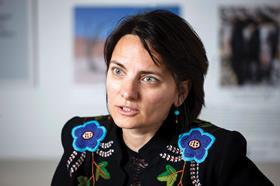‘[…] everyone still thinks that women, whether employed or unemployed, are a detail of the working world, a quiet, passive unimportant detail, easily exploited, easily oppressed, and not worth bothering about.’
The Woman’s Leader, 1920
I was asked recently whether 2018 will still be remembered as ‘the year of women’. After all, that was the year that has brought to the surface, with the help of social media, the sexual misconduct women routinely face in the workplace, from Hollywood to advertising to the law. But equal opportunity, equal pay and equal representation remain ambitions and not realities for too many women. Why should this new wave of feminism succeed in delivering equality where previous waves have failed? The current pandemic is a classic ‘black swan’ world event that has previously pushed women back into the domestic world and research carried out shows that women are picking up most of the childcare and housework.

Despite marking both the centenary of the vote and the opening up of the professions celebrations in the last 2 years, fatigue has already started to set in, with male executives on boards of large businesses bemoaning that ‘all good women are taken’ and that the well of female talent is dry as they attempt to meet a target of 30% of women on boards. Luckily, most of the FTSE250 seems to now have at least one woman on their boards despite the number of FTSE100 women CEOs counting a mere … 5. The BBC announced that the pay gap at the publicly-funded corporation was down to ‘6.7%’ in 2019 whilst law firms explained their huge pay differentials – and in some cases increased pay gaps reported for the very year that we marked 100 years of women in law - by the lack of women in highly paid roles. When Chancellor Rishi Sunak announced his economic emergency rescue package on 24 March, he also announced that the compulsory gender pay reporting would be suspended for the current year. A move that hardly made any waves at the time, as the UK was placed under lockdown, despite it brought in so close to the deadline for filing, of 5 April, that most companies would have simply had to complete their reports to file. Those that did file, show an increase gap of pay and bonus.
The 1919 Act gave women access to professions but the Equal Pay Act 1970 did not deliver equal pay and, at the current rate of progress, women are facing another 50 years before they achieve parity in terms of leadership positions and being paid equally in those positions. Indeed, the highest pay gap of all – 87% – is at the CEO level. A 2019 survey showed that a third of British people believe that a mother should stay at home to look after her young children, which suggests that the cultural shift we expected of the millennial generation is not shifting as quickly as expected.
Should we legislate for a 50:50 parliament? Should we legislate for quotas on boards? Should we create an equal-pay task force that imposes huge fines on those organisations that discount the work of women? How can we enforce the equal take-up of parental leave so that mothers do not have to explain away their career gap when they return to work? Many of these questions are equally relevant today as they were 100 years ago and have been at the heart of the equality debate throughout the last century. They were tackled with some degree of legislative vigour in the ‘decade of legislation’ in the 1970s but seem to have remained stubbornly current since. It is important that we spend more time studying each of the feminist waves to help us to understand what strategies worked and why.
The focus of the next century should be to eliminate the discounted value label attached to women who work. Not only will this give women more options to stay at home as mothers or to work, but it will also pay for the help required in the domestic space to ensure they can participate more visibly in public life.
‘We must force public opinion to take full account of the problems of the employed woman, and to take them on their modern merits, and not on the outworn prejudices that have lasted from pre-enfranchised days.’
As climbers know, it is always the final push toward the summit that is the toughest climb – and this will be the fight of the next century for women professionals.
Dana Denis-Smith is founder of The First 100 Years project































6 Readers' comments